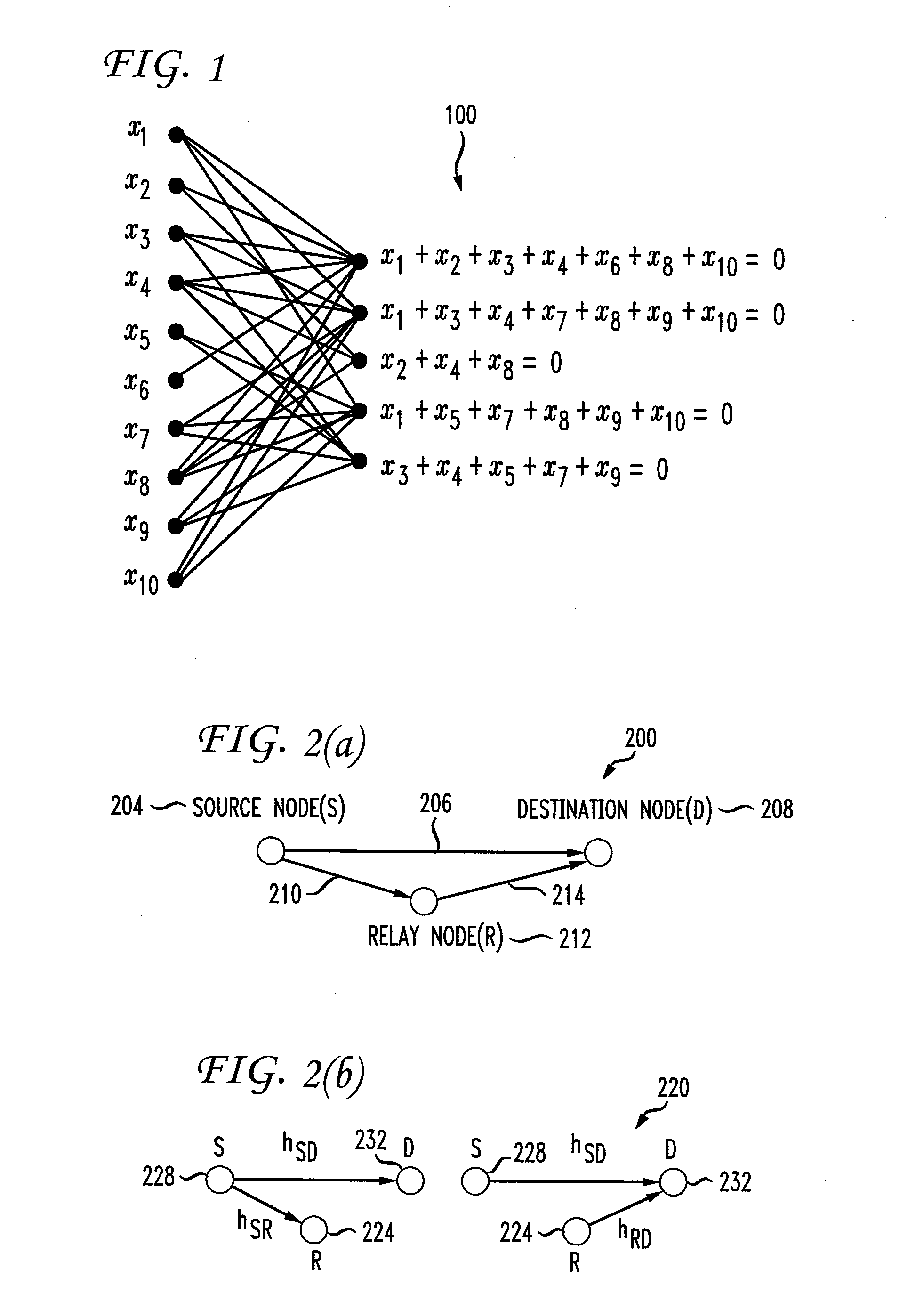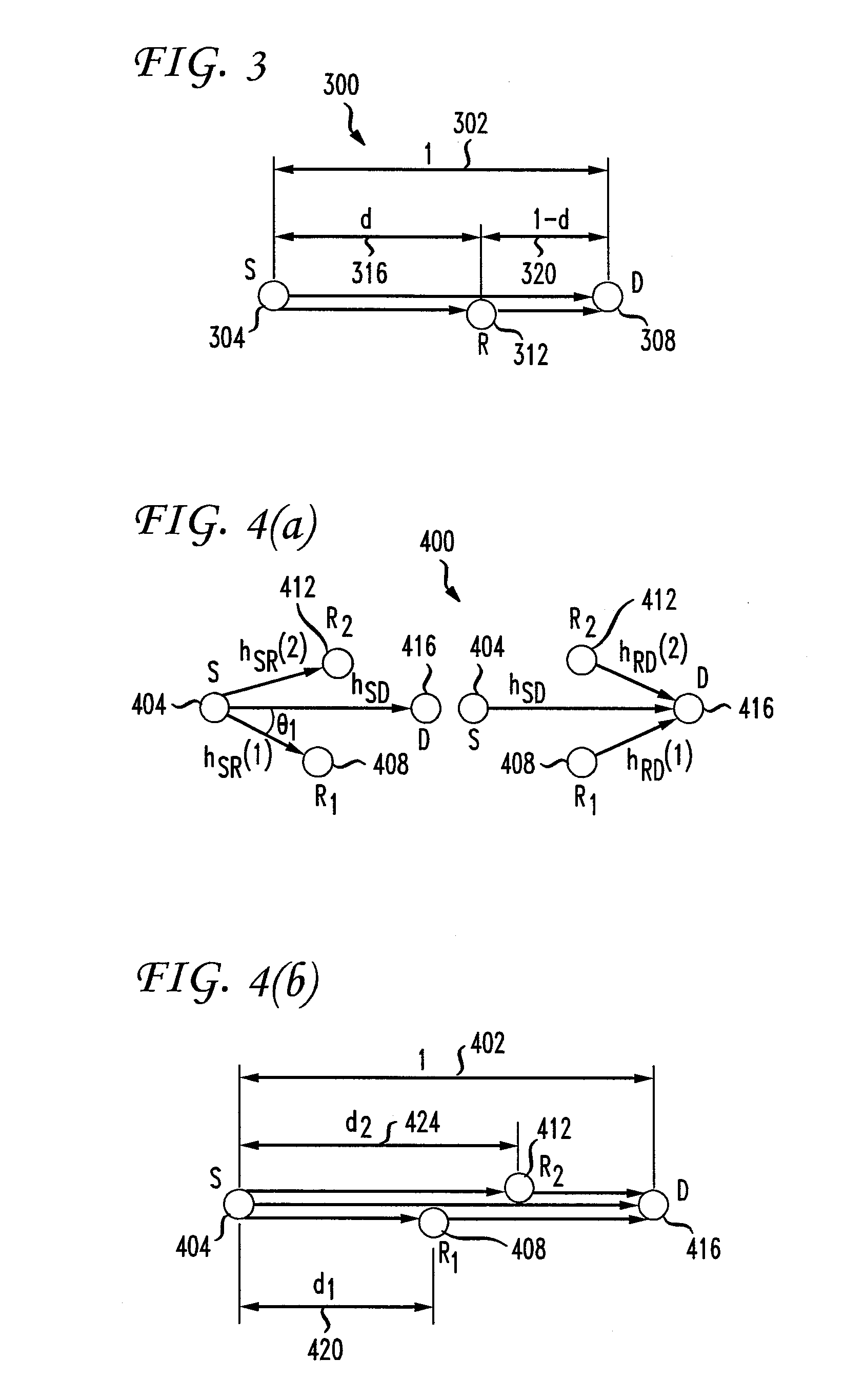System and Method for Low-Density Parity Check (LDPC) Code Design
a code design and low-density parity technology, applied in the field of wireless communication, can solve the problems of affecting the quality of the communication channel over which the source and destination communicate, the inability to reliably transmit rates above the capacity, and the distortion of the messag
- Summary
- Abstract
- Description
- Claims
- Application Information
AI Technical Summary
Benefits of technology
Problems solved by technology
Method used
Image
Examples
Embodiment Construction
[0042]FIG. 2(a) shows full-duplex relay operations of a single relay system 200 during a single time slot. In particular, a source node, or source S, 204 communicates a message 206 to a destination node, or destination D, 208 during a time slot. The source 204 also communicates the message 210 to a relay node, or relay, 212. The relay 212 communicates the same message (shown with arrow 214) to the destination 208. Because the system 200 is a full-duplex relay system, the relay 212 can receive the message 210 from the source 204 and simultaneously transmit the message 214 to the destination 208. The source 204, relay 212, and destination 208 can be wireless terminals in a wireless network.
[0043]FIG. 2(b) shows half-duplex relay operations of a single relay system 220 during two consecutive time slots. Specifically, the left side of FIG. 2(b) shows the operations within the odd time slot and the right side of FIG. 2(b) shows the operation within the even time slot. During the odd tim...
PUM
 Login to View More
Login to View More Abstract
Description
Claims
Application Information
 Login to View More
Login to View More - R&D
- Intellectual Property
- Life Sciences
- Materials
- Tech Scout
- Unparalleled Data Quality
- Higher Quality Content
- 60% Fewer Hallucinations
Browse by: Latest US Patents, China's latest patents, Technical Efficacy Thesaurus, Application Domain, Technology Topic, Popular Technical Reports.
© 2025 PatSnap. All rights reserved.Legal|Privacy policy|Modern Slavery Act Transparency Statement|Sitemap|About US| Contact US: help@patsnap.com



